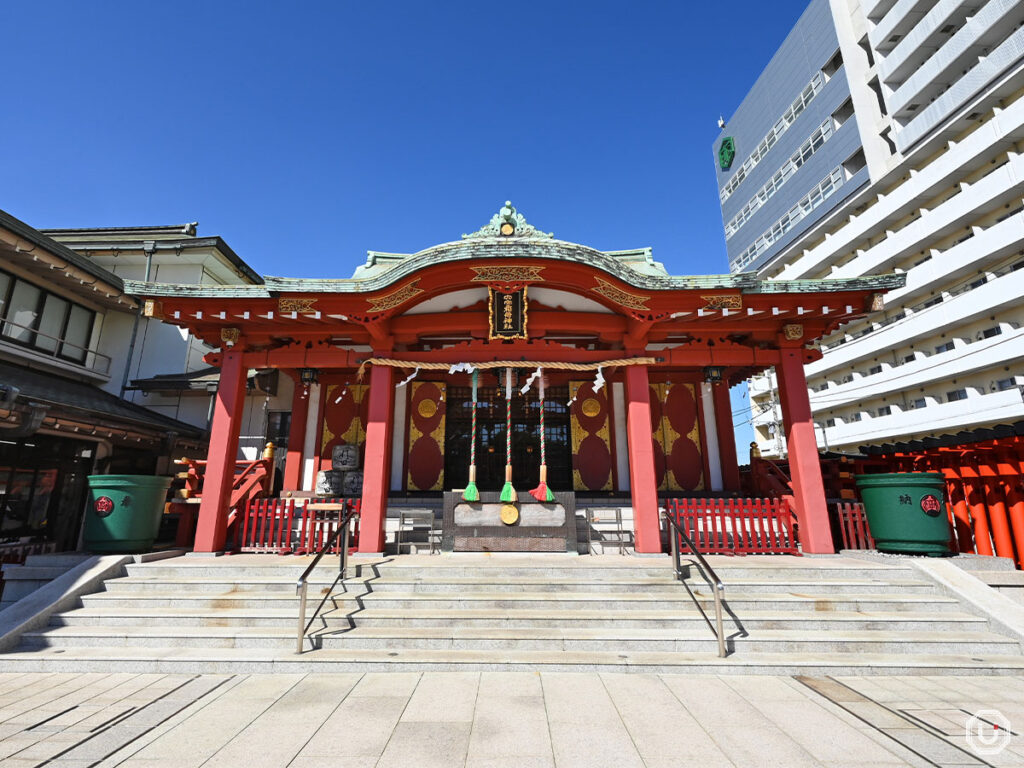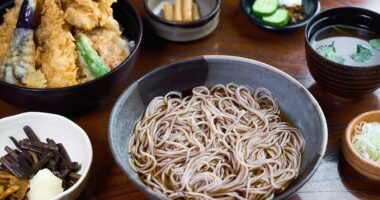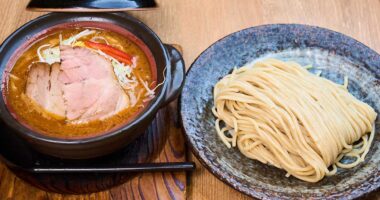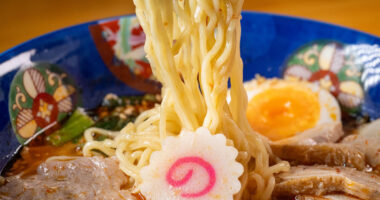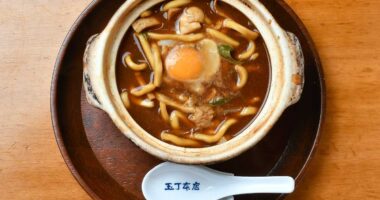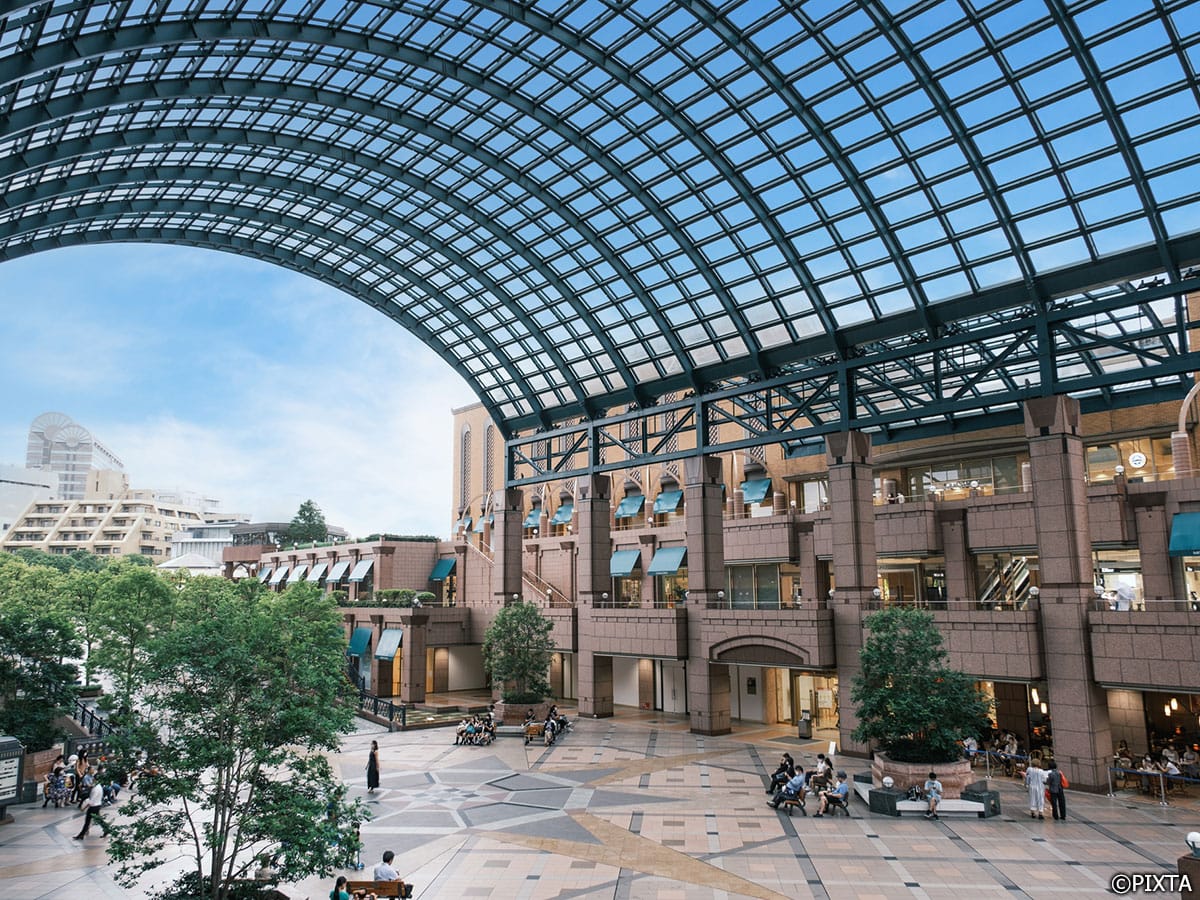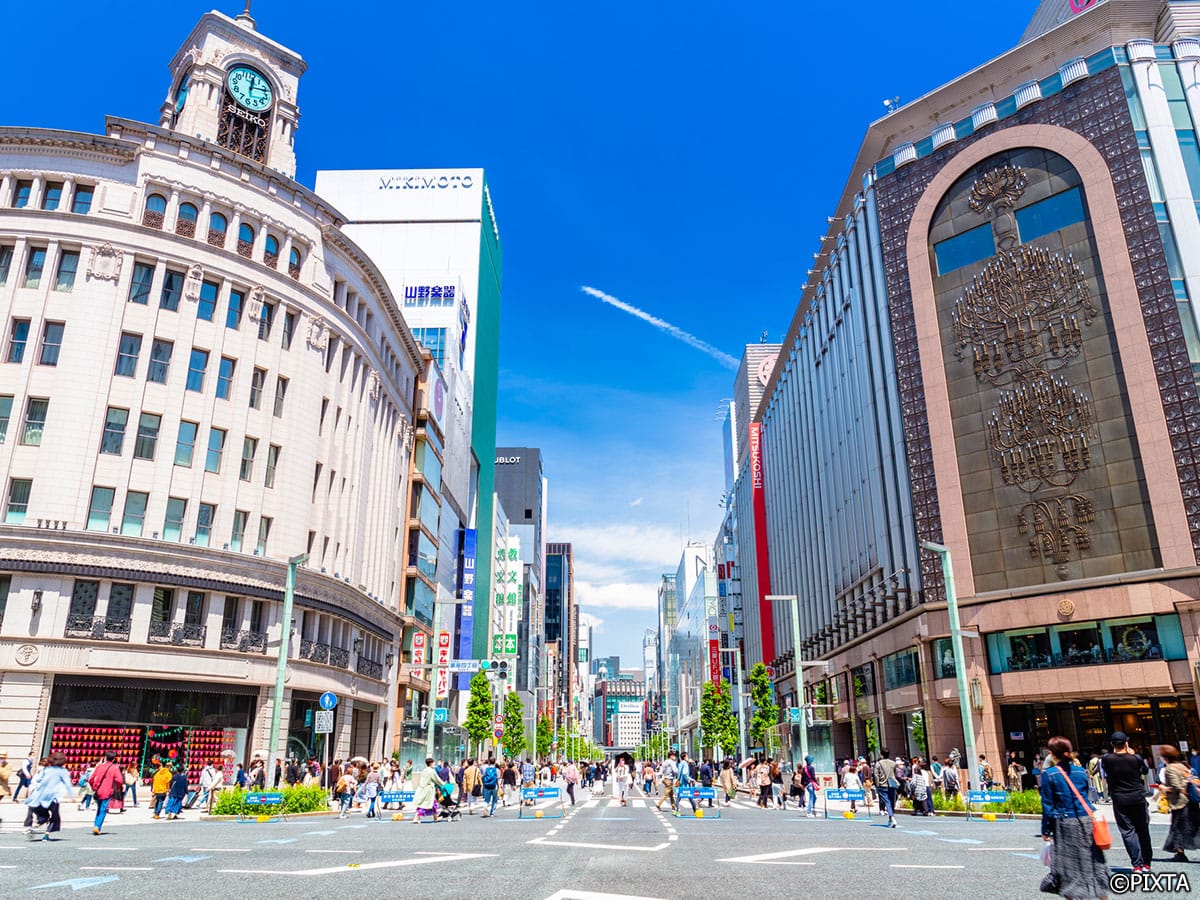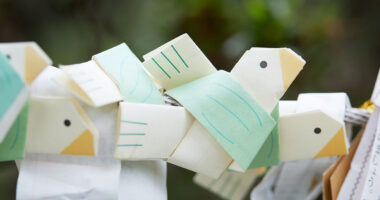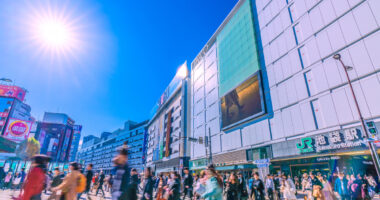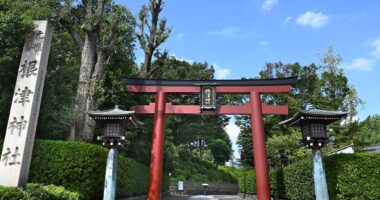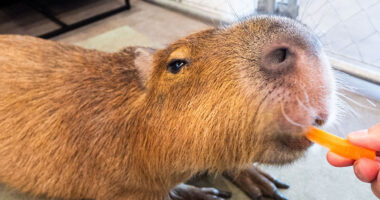The Anamori Inari Jinja Shrine, located near Haneda Airport, is said to offer blessings for safe air travel and journeys. The nearest station is Anamori-Inari Station, just three stops away from Keikyū Airport Line’s Haneda Airport Terminal 1 and Terminal 2 Station, making it a convenient spot to visit during your travels.
The shrine is known for offering various blessings, and as of 2024, it’s also recognized as a notable location related to the popular mobile game Uma Musume: Pretty Derby (referred hereunder as Uma Musume).
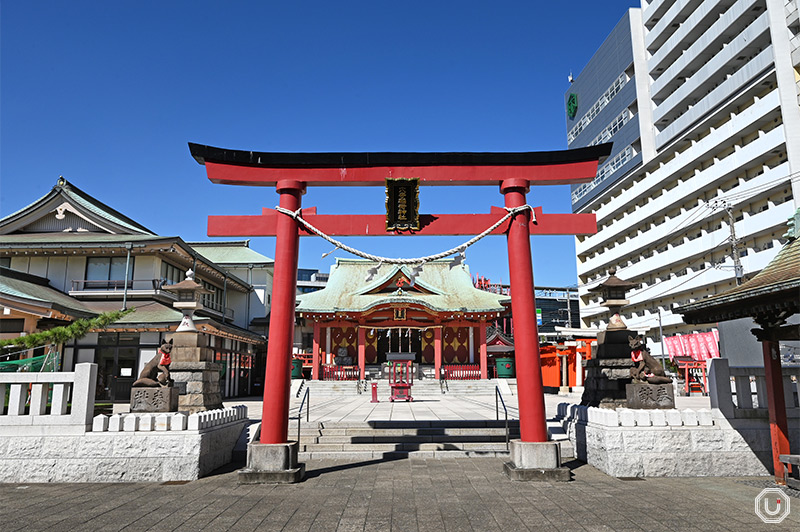
Anamori Inari Jinja Shrine
Walk through the “thousand torii” to Okunomiya and Inariyama
Anamori Inari Jinja Shrine was once located on the grounds of what is now Haneda Airport. It was originally built as the guardian deity of the surrounding land.
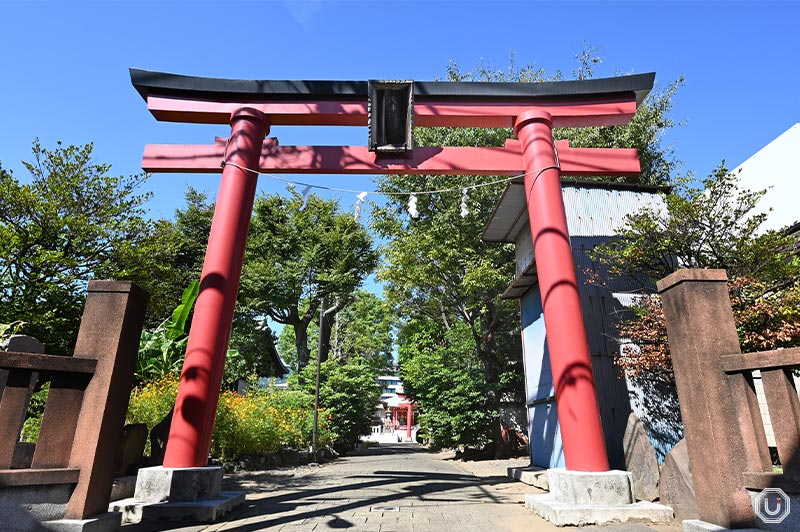
Meeting the various forms of Inari deities is one of the charms of Anamori Inari Jinja Shrine.
Before offering prayers at each shrine, purify your hands and mouth at the temizuya or chōzuya (meaning “hand water station”) and then proceed to the main hall.
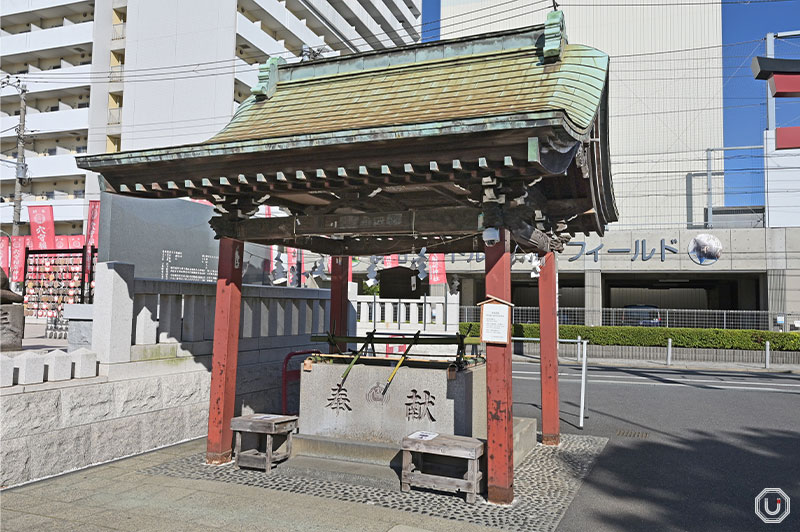
Temizuya
At the main hall, offer a coin as a token of gratitude and pay your respects using the ritual of two bows, two claps, and one bow. Bow deeply twice, then clap your hands twice—be sure to slightly shift your hands when you clap for a better sound. Finally, bow deeply once more. This is the standard protocol for paying your respects at this shrine.
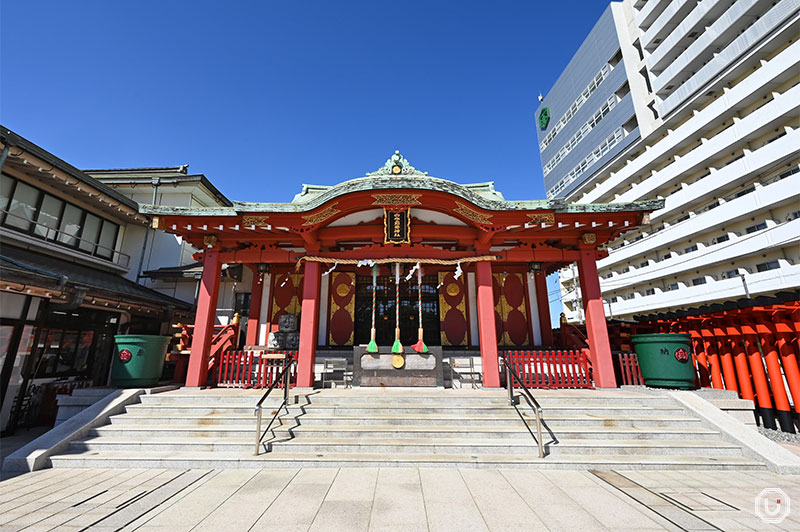
Main worship hall
Next to the main worship hall, you will find the senbon torii (literally “thousand torii”), a series of vermilion torii gates.
After passing through this row of bright red gates, you will reach Okunomiya, which resembles a cave. Here, you should pay your respects in the same manner as at the main hall—two bows, two claps, and one bow.
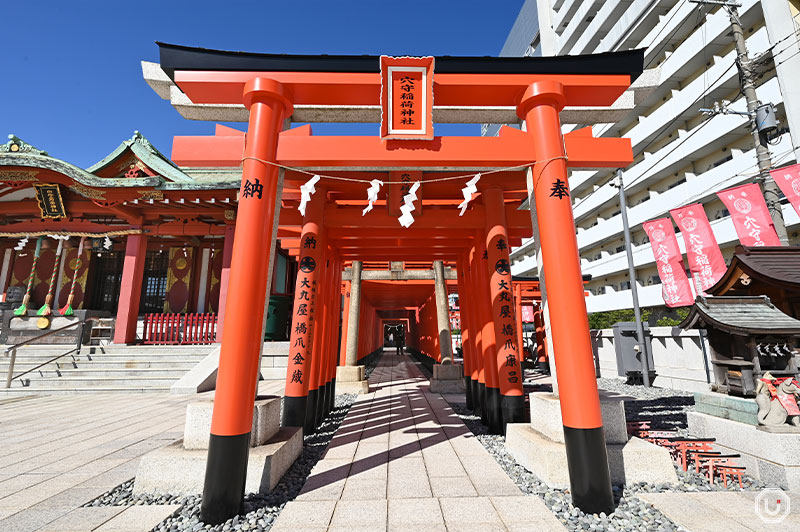
Senbon torii
At Okunomiya, there are numerous statues of foxes, the messengers of Inari, ranging in size from large to small. The unique sight is truly impressive.
Beside the senbon torii are other shrines: Hisshō Inari (“guaranteed win Inari”), Kaiun Inari (“good luck Inari”), Shusse Inari (“success Inari”), and Han’ei Inari (“prosperity Inari”). These are all worth a visit as well.
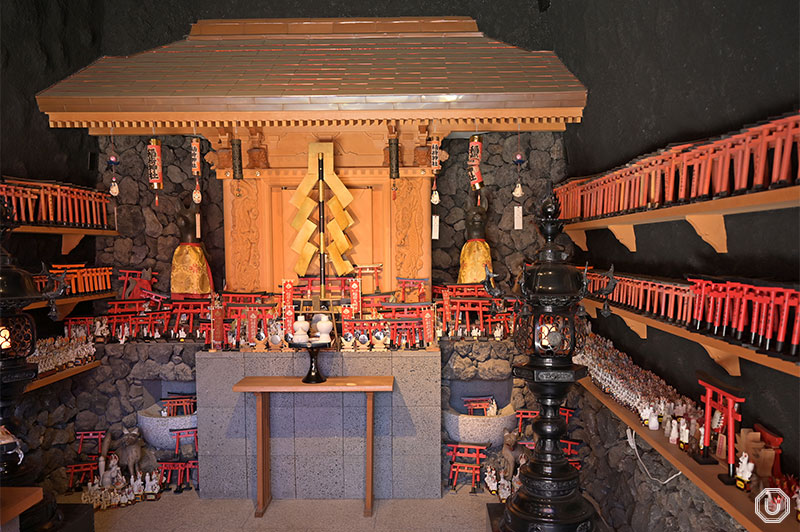
Okunomiya
To the left of Okunomiya, there are stairs leading up to Inariyama (literally, “Inari mountain”).
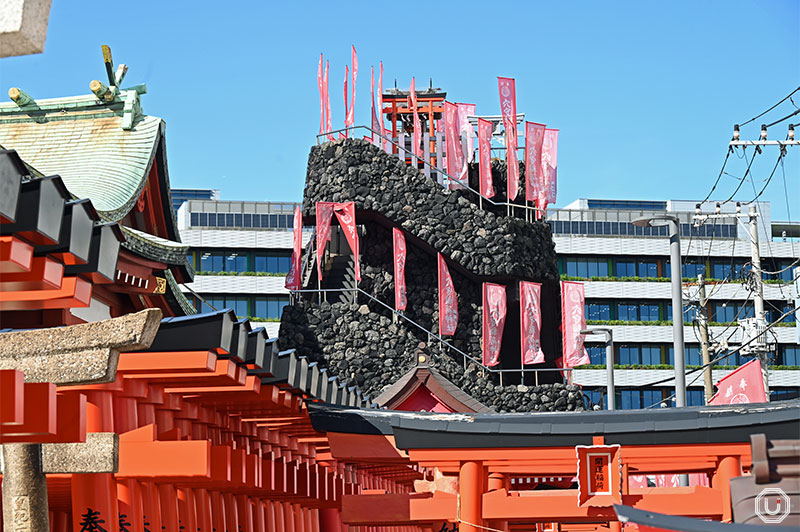
Inariyama
As you ascend to the top, you will encounter many Inari shrines. At the far end lies Kōkū Inari (“airport Inari”). Koku Inari is said to provide blessings for safe air travel, making it a perfect spot for frequent travelers or those about to board a flight. Take your time to pay your respects for a safe journey.
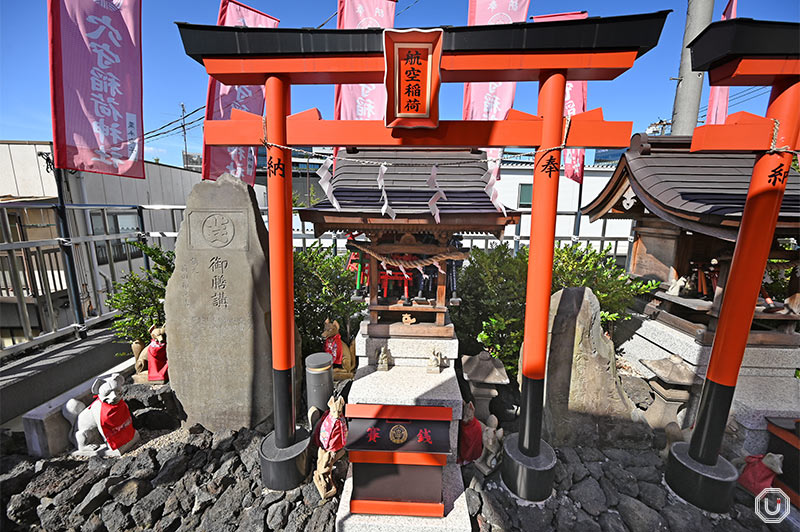
Koku Inari
At the summit of Inariyama, you will find Inari Kamino-sha and the Ontake-Jinja shrine. At the latter, you will see a stone called Hizatsuki Ishi (the Kneeling Stone). The usual way to pay your respects here is to kneel before it.
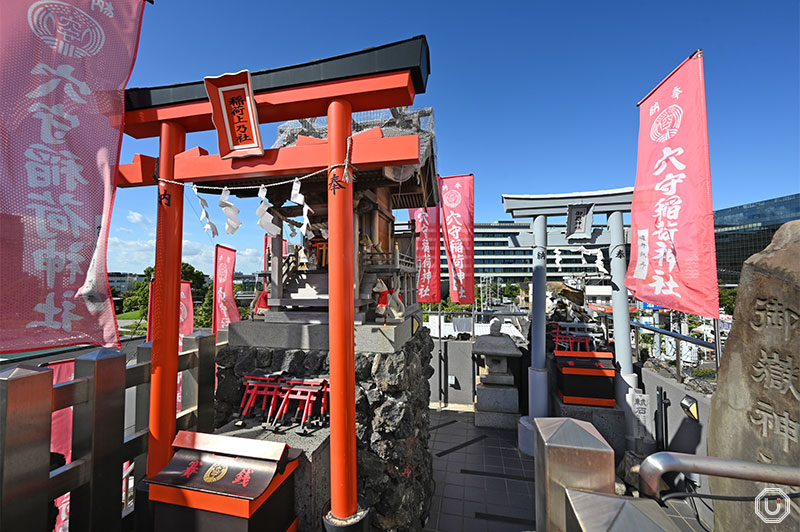
(Left) Inari Kamino-sha, (Right) Ontake-Jinja Shrine
Although surrounded by buildings, the summit offers a panoramic view of the shrine grounds. It’s quite rare to find a place where you can look down at the Senbon Torii from above.
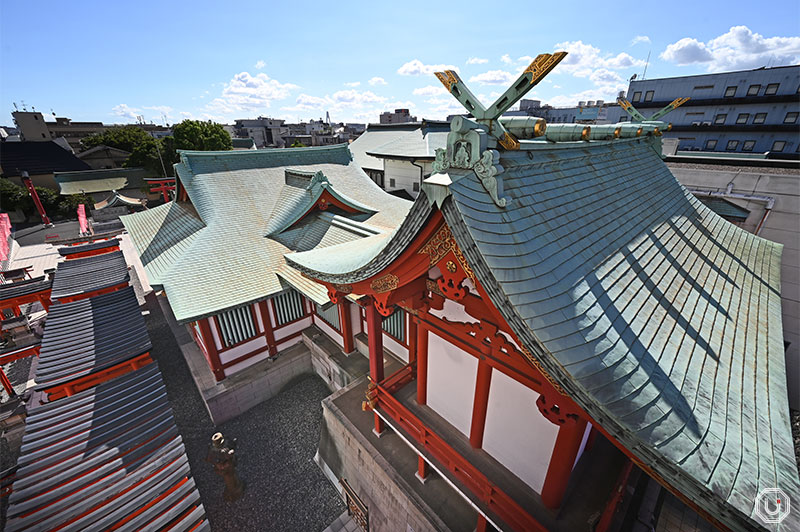
Receive sacred sand to invite fortune
Descending Inariyama leads you to a cave called Oana. Next to the offering box, you’ll see several boxes filled with sand. This is the famous Goshin-suna (literally “godly sand”) of Anamori Inari Jinja Shrine.
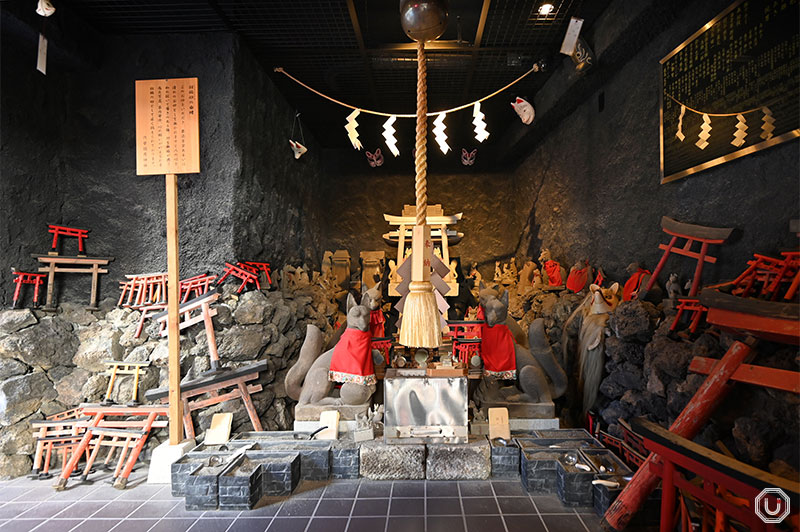
Okunomiya
Goshin-suna is believed to bring blessings when brought home and sprinkled around your house or shop (if you’re a shop owner). For household safety or business prosperity, sprinkle it at the entrance, and for new constructions, sprinkle it at the center of the site.
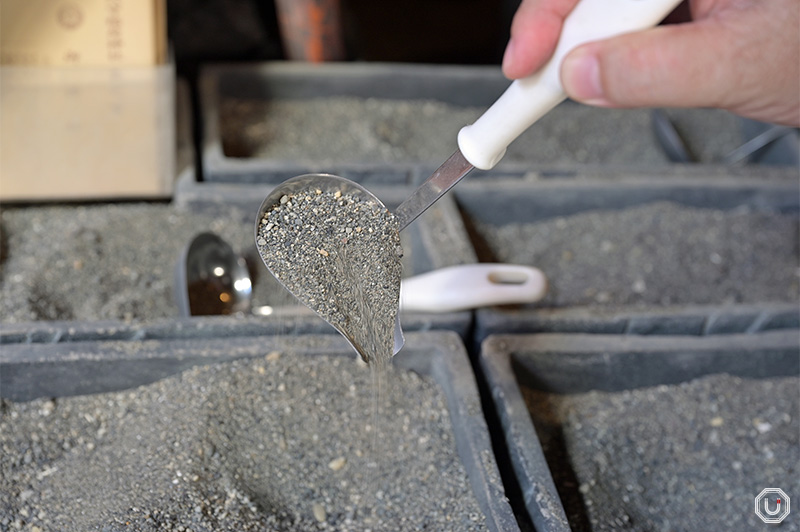
Goshin-suna
A story about this sacred sand has been passed down through generations. Once upon a time, a fisherman put the fish he caught in a basket and returned home. However, for some reason, no fish were found in the basket, only wet sand. This strange occurrence happened the day after a big catch as well. The locals blamed it on a fox, captured it, and were about to punish it.
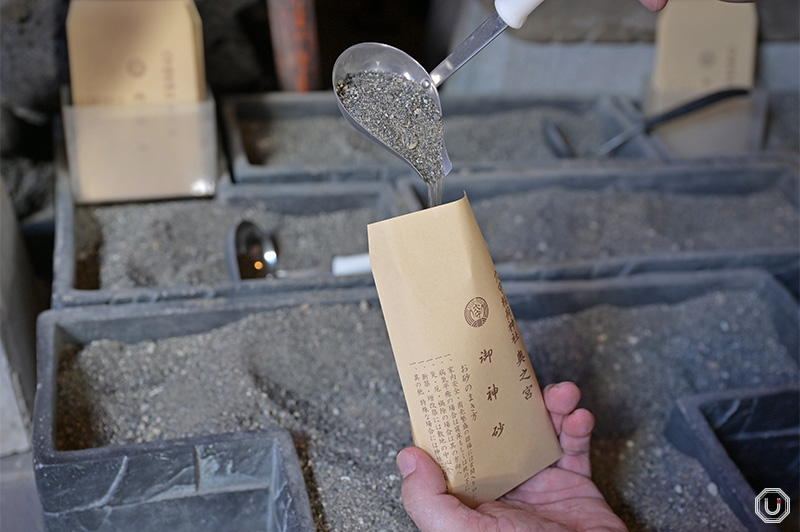
However, feeling sorry for the fox, the fisherman decided to set it free. From that day onward, the fisherman continued to have great catches, and the basket was always filled with many fish and a little bit of sand. After bringing that sand home and spreading it around, more customers began visiting his house to buy fish, leading to great wealth. Since then, the sand has been considered “lucky sand,” and many people began seeking it out.
A shrine linked to racehorses, now a pilgrimage site for Uma Musume fans
Due to its proximity to Haneda Airport, you can often see worshippers carrying suitcases at Anamori Inari Jinja Shrine. International visitors are also a common sight.
The shrine grounds include a simple luggage storage area where you can chain-lock your suitcase or other items, conveniently allowing you to pay your respects stress-free even on the way to the airport.
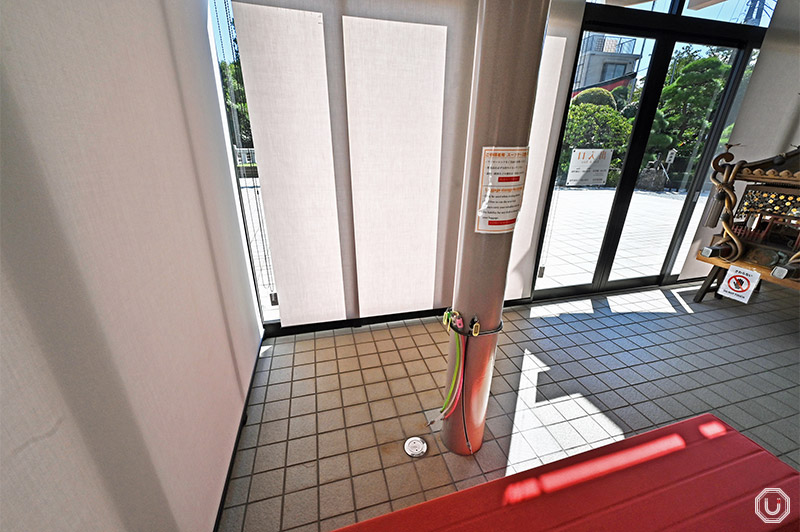
Luggage storage area
Anamori Inari Jinja Shrine also has ties to a famous racehorse that once took the country by storm. The horse’s name was Inari One. Its owner was a devoted worshipper of Anamori Inari Jinja Shrine. The “Inari” in the horse’s name comes from Anamori Inari Jinja Shrine, with “One” added in hopes of achieving first place in races, hence “Inari One.”
At the shrine office, you can see decorations and memorabilia from major races like the Tennō Shō (Emperor’s Prize) and the Takarazuka Kinen displayed upon request.
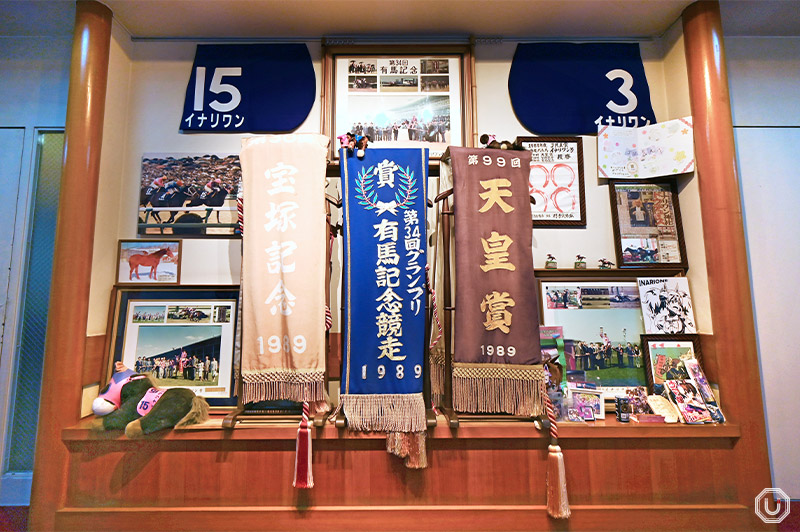
Recently, Inari One has been featured as a character in the abovementioned mobile game Uma Musume, where racehorses are anthropomorphized as “horse girls.” This has led to Anamori Inari Jinja Shrine becoming a pilgrimage site for Uma Musume fans. Uma Musume has also been adapted into manga and anime, making it popular worldwide and attracting international tourists to the shrine.
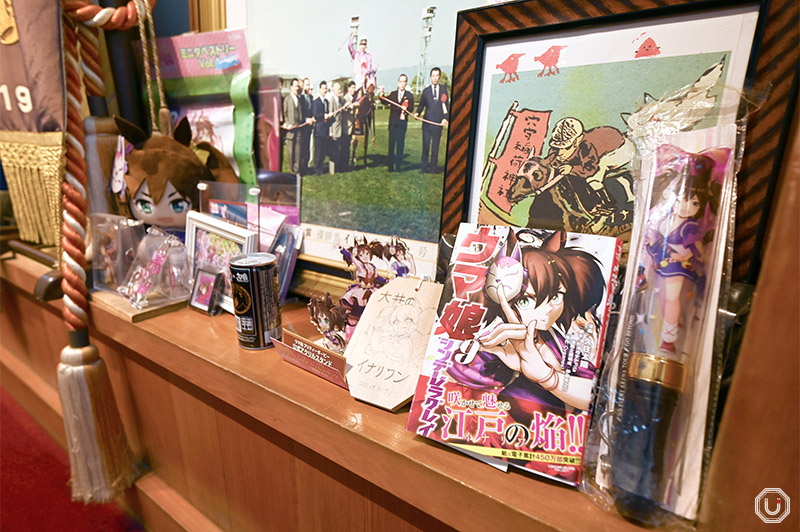
At the shrine office, you can receive a goshuin (a special seal obtained as proof of pilgrimage) and other items. Many people visit here before heading to Haneda Airport, making the omamori (amulets available at Japanese shrines and temples and granting good luck or protection) for safe air travel especially popular.
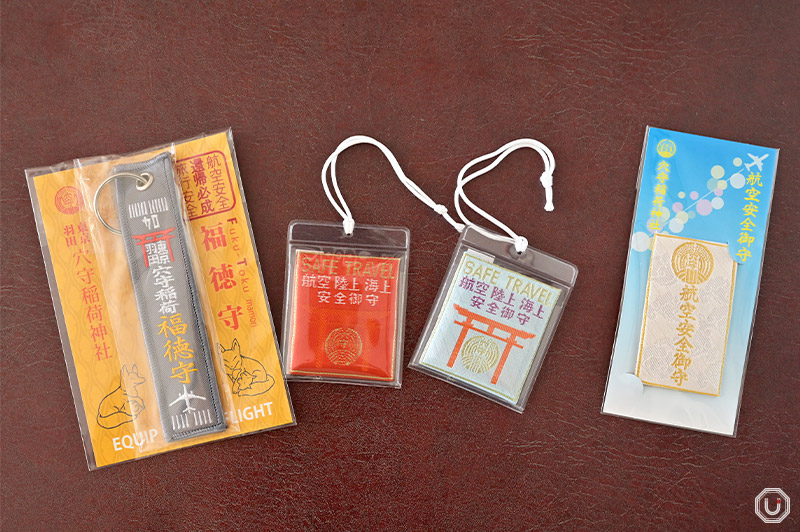
(Left) fukutoku mamori good luck amulet 1,500 JPY, (Middle) ryokō anzen mamori travel safety amulet 1,000 JPY, (Right) kōkū anzen mamori safe air travel mamori 1,000 JPY
Additionally, there is a goshuinchō (seal book) available, made in collaboration with Japanese airlines. The design, featuring an airplane, is charming and might appeal to people who aren’t necessarily aviation enthusiasts.
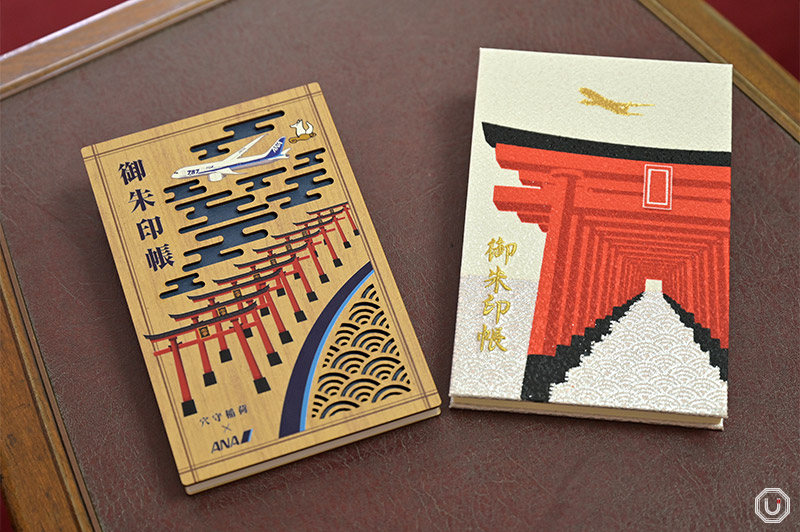
(Left) Goshuinchō (ANA) 3,500 JPY, (Right) Goshuinchō (JAL) 3,500 JPY
Before leaving the shrine, experience the sound of the suikinkutsu
Next to the stone water basin in front of the shrine office, there is a suikinkutsu (water harp). In front of the small torii decoration are two fox statues facing each other. Scoop water from the basin with the ladle and pour it over the foxes. After a moment, you’ll hear a sound similar to a glockenspiel coming from beneath the ground. This is because an urn is buried underground. The ethereal sound, like something from modern music, is pure and striking.
Be sure to immerse yourself in the peaceful chime of the suikinkutsu as a perfect ending to your visit to Anamori Inari Jinja Shrine.
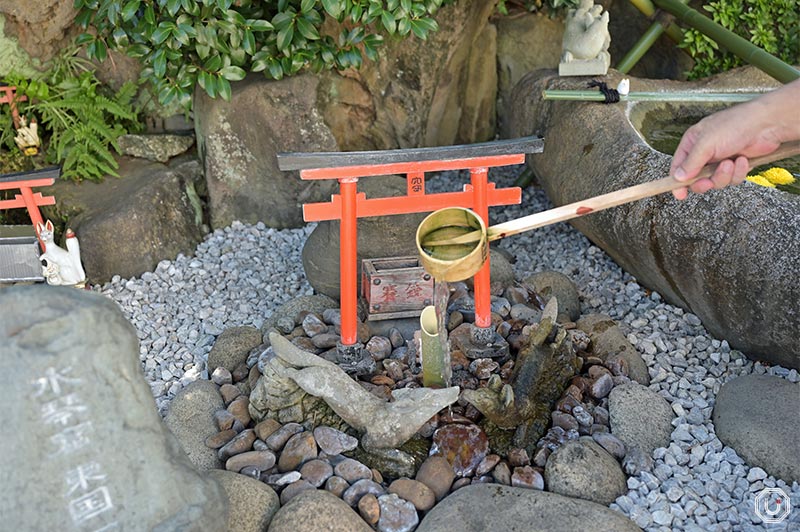
Suikinkutsu
If you have time, visit the old original torii gate about a 10-minute walk from the shrine.
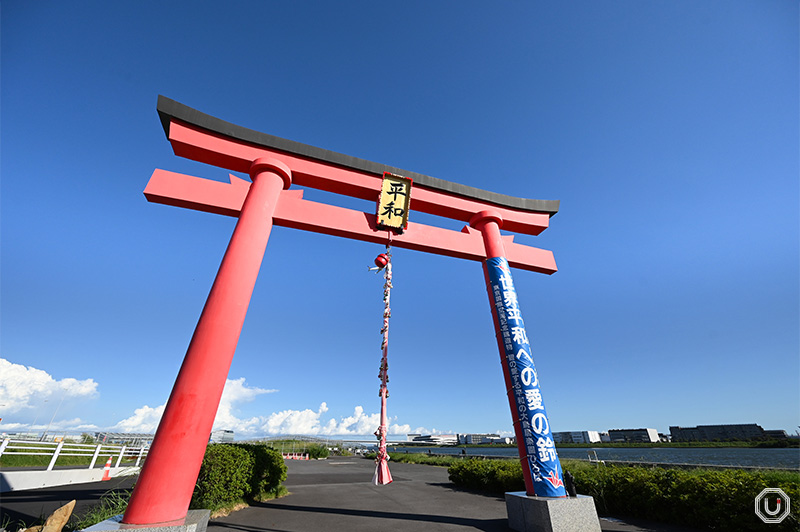
Old original torii gate
This torii gate was once part of the path to the old location of Anamori Inari Jinja Shrine and now stands by the Tama River. From time to time, you can see airplanes taking off right beyond the large torii gate.
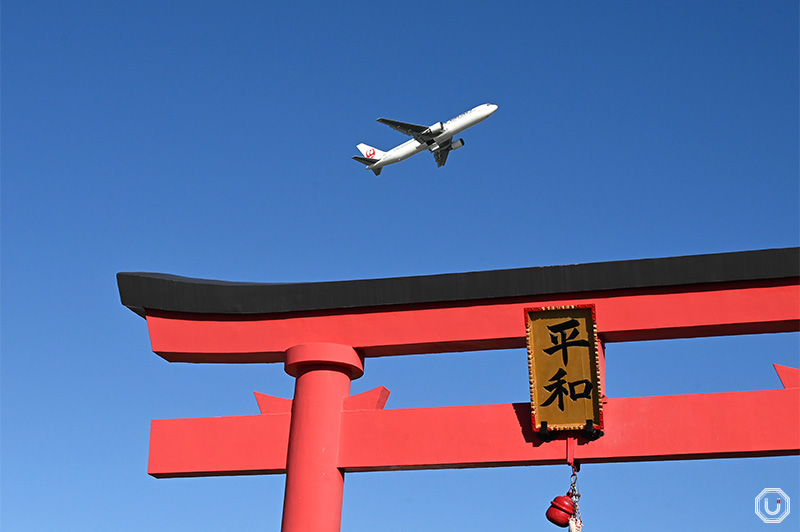
Shrine Information
| 名前 | 穴守稲荷神社 Anamori Inari Jinja Shrine |
|---|---|
| Address | 5-2-7 Haneda Ōta-ku Tokyo
|
| Access |
Anamori-Inari Station 5-minute walk from Anamori-Inari Station entrance
Tenkubashi Station 6-minute walk from Exit A2
|
| Phone number | 03-3741-0809 |
| Visiting Hours | 24 hours |
| Sacred items | Available from 8:30-17:00 |
| Goshuin | Available from 8:30-17:00 |
| Omikuji | Available from 8:30-17:00 |
| Admission fee | Free |
| Official website | https://anamori.jp/yuisho.html#history |
| Other information |
|
※The information in this article is current as of October 2024.
